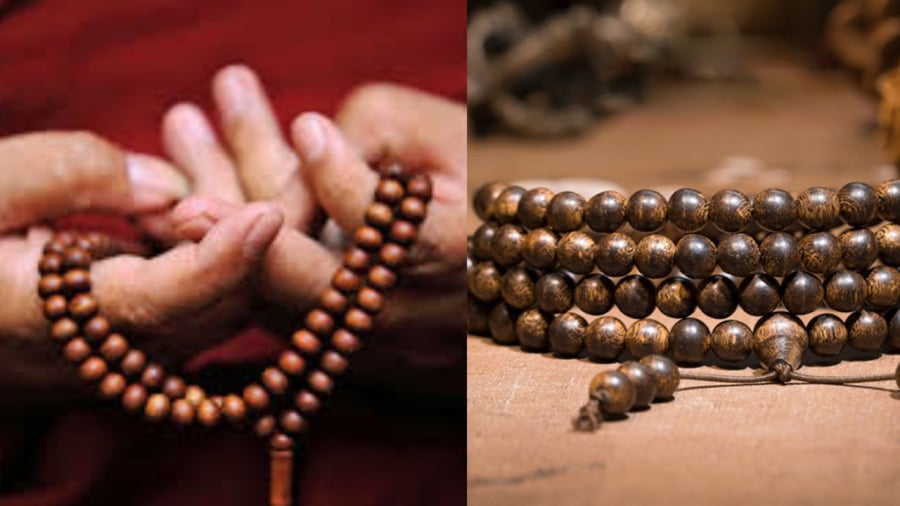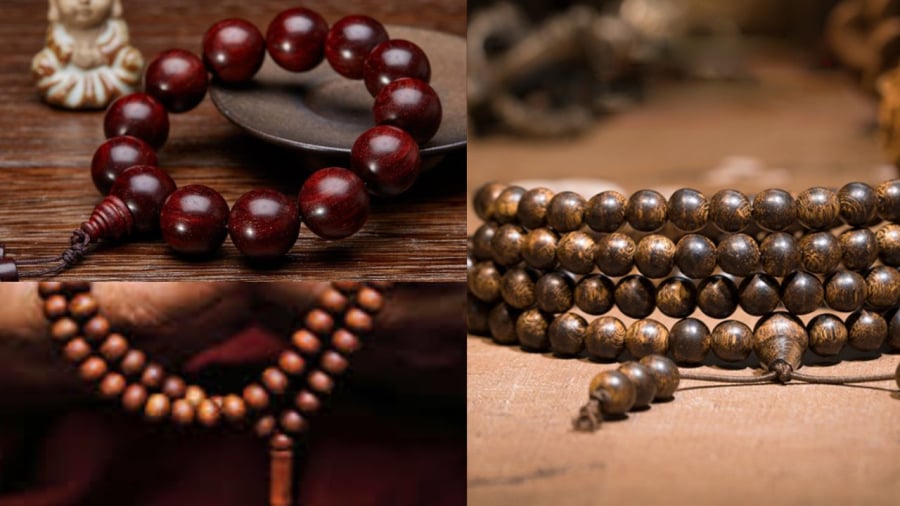Malas, or Buddhist prayer beads, typically consist of 108 beads, regardless of the type of wood used. Longer strands may have 54, 42, 27, 21, or 14 beads, but the longest strand is always 108 beads. This number is not arbitrary and holds spiritual significance.
Why 108 beads?
In Buddhism, the number 108 is significant as it represents the 108 Tam Muội laws and the elimination of 108 afflictions. These afflictions are believed to arise from the six senses (eyes, ears, nose, tongue, body, and mind), the six sense objects (form, sound, smell, taste, touch, and dharmas), and the six consciousnesses (seeing, hearing, smelling, tasting, touching, and thinking). Multiplying these three sets of six gives us 18 realms (shí bā jiē). By further multiplying the 18 realms with the eight common afflictions (greed, hatred, delusion, pride, doubt, heretical views, anger, and ignorance), we arrive at the number 108 afflictions.

108 Beads Symbolize the Elimination of 108 Afflictions
Additionally, the Mộc Hoạn Tử Sutra mentions that the Buddha, while traveling in the mountain of Kỳ Xà Quật with his disciples, was approached by the local king, Ba Lưu Ly, who requested an easy method of spiritual practice to overcome afflictions. The Buddha advised him to use a strand of 108 beads made from the mộc hoạn tử tree. He instructed the king to carry the beads with him and constantly focus on chanting the names of the Buddha, the Dharma, and the Sangha, moving from bead to bead. By completing 200,000 rounds without mental distraction, one would attain happiness and peace. The 108 beads symbolize the attainment of the 108 Tam Muội laws and the elimination of the 108 afflictions, leading to a state of bliss.
In Vajrayana Buddhism, the 108 beads are often used for mantra recitation, with the additional eight beads serving as a buffer for any mistakes made during the practice. Alternatively, the 100 beads are used for personal mantra recitation, while the remaining eight beads are dedicated to prayers for all sentient beings.
What about other bead counts?
Besides the traditional 108-bead mala, shorter strands with 54 or 42 beads are also popular as fashion accessories or for those who prefer a more compact option. Some people also opt for strands with 27, 21, or 14 beads.
– A 54-bead mala represents the 54 stages of a Bodhisattva’s spiritual practice, including the Ten Faiths, Ten Residences, Ten Practices, Ten Dedications, Ten Grounds, and Four Good Roots.
– A 42-bead mala symbolizes the 42 stages of a Bodhisattva’s path, encompassing the Ten Residences, Ten Practices, Ten Dedications, Ten Grounds, Equal Enlightenment, and Wonderful Enlightenment.

Each Bead Count Holds a Different Symbolism
– A 27-bead mala represents the 27 stages of the Hinayana path, including the 18 stages of the Four Directions and the Three Fruits, along with the nine stages of Arhatship.
– A 21-bead mala signifies the 21 stages, encompassing the Ten Grounds, Ten Paramitas, and the stage of Buddhahood.
– A 14-bead mala is associated with the 14 Fearlessnesses of Bodhisattva Avalokiteshvara, also known as the Bodhisattva of Compassion.
Given these symbolic associations, it is important to pay attention to the number of beads when purchasing a Buddhist prayer bead mala or a fashion accessory with spiritual significance.
Reference for further exploration


































